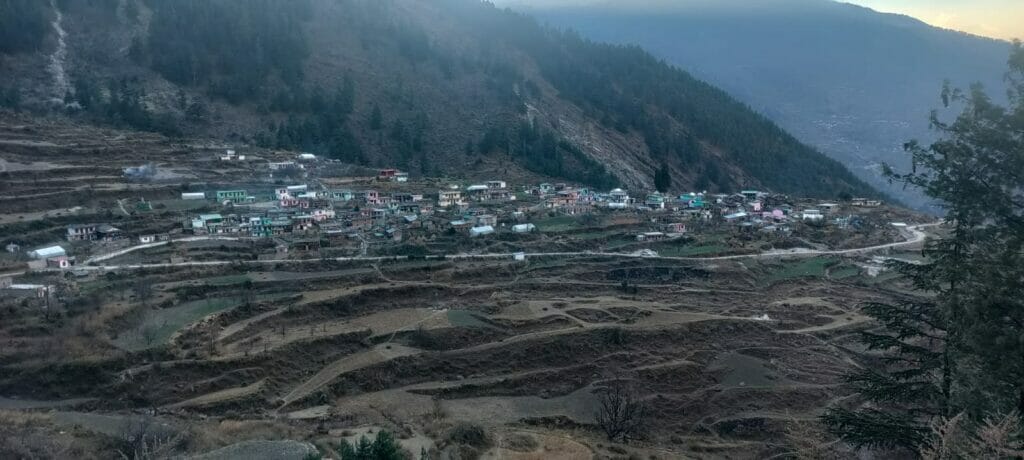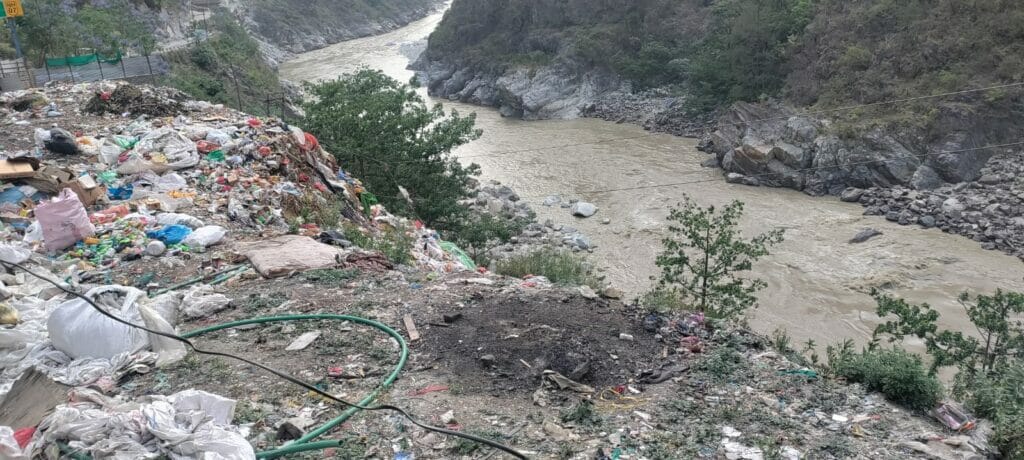As I write this article, we are in the middle of May which began with unseasonal rainfall occurring in the plains of the Ganges and Yamuna rivers. There was snow in the mountainous regions of Uttarakhand. Since then, the sun is out and the skies are clear. But uncertainty remains of what the future holds, especially as the monsoon season sets in.
This situation is worrisome, not only from a health perspective but also from an agricultural standpoint.
Before moving forward, it is vital to look at the weather patterns from this winter to now. The weather has been hotter than usual in the winter months. Extreme cold was felt only for a day or two. There was very little rainfall, hence there was none to minimal snowfall in the mountains. The Himalayan glaciers of Uttarakhand, which make the Ganga and Yamuna perennial rivers, did not receive new snow this winter.
In Uttarakhand, the maximum snowfall is usually in January, which recorded 21.5 mm of rainfall this year, 47% less than average according to the Dehradun Met Centre of India Meteorological Department. Conditions were worse in the snowfall districts. Almora had a whopping 92% less rainfall, while Bageshwar and Pithoragarah were not far, reporting 85% and 84% less rainfall than normal. Other hill districts like Pauri, Rudraprayag, Champawat and Chamoli reported 73%, 56%, 52% and 45% less rainfall than normal in January.
By the end February, the situation had worsened with Uttarakhand experiencing a decrease of up to 62% rainfall. The state normally reports close to 100 mm of rainfall during January and February, but this year it was only 36.8mm.
Read more: Varanasi’s horrible air quality typical of issues faced by cities of Indo-Gangetic plain
However, the range of rainfall increased in March and April. Uttarakhand received 63.5 mm of rainfall in March, which was 17% more than usual, and in April, it received 63.7 mm of rainfall, which was 63% more than average, a combined increase above normal of 36%. This figure is as of the morning of April 30th. On that day, heavy rainfall was recorded in almost all parts of the state until late at night. Overall temperatures settled at least 4 to 5 degrees Celsius below normal across the state in April.
Due to less rainfall in January and February, it was less cold and most days recorded a temperature of 4 to 5 degrees Celsius above normal. This trend continued until March 15th after which rainfall increased. On March 31st, there was a significant drop in temperature. The maximum temperature in Dehradun was 18 degrees Celsius, which was 11 degrees Celsius below normal.
Unpredictable rainfall continued until the early days of April. However, with a significant increase in temperature, the rainy season began again. Thus, the pattern of rainfall seems to have completely changed this time. Weather in the mountains with elevations up to 3000 meters receiving snowfall in the start of May is signalling a significant change in the weather pattern.
Crop losses could go up
Due to such unexpected weather changes, various reports indicate that crops have suffered losses of 20 to 25%, as during the cold months, the unirrigated crops were unable to sustain due to the lack of rainfall. In March, when both irrigated and unirrigated crops such as wheat, barley, mustard, and potatoes were almost ready, sudden storms, rain and hailstorm began.

As a result of this erratic pattern, agricultural scientists estimated that crops in the plains of the Ganges and Yamuna rivers in Uttar Pradesh, which are considered amongst the most fertile in the country, would have suffered losses of up to 10 to 15% by the end of March.
This situation also persisted in parts of Punjab, Haryana and Rajasthan. The process of crop damage did not stop here. In the early days of April, after a few days of dry weather and increasing heat, the unusual rainfall started again, which continued even in May. This unusual weather pattern increased the potential damage to standing crops.
Experienced farmers believe that during the cold months, temperatures lower than usual and a rapid increase in temperature after the second fortnight in March are good for wheat yields. However, this time it was the opposite. During the cold months, from November till the end of March, the temperature was higher than usual almost every day, and after the second fortnight of March, most days were recorded as lower than usual.
There cannot be too much hope from the monsoon season this year though the weather department has said normal rainfall in its initial forecast. After the new analysis, another forecast will be issued towards the end of May. It is understood that the situation will become somewhat clearer then on what to expect in June, to start with.
Read more: Extreme rainfall events on the increase extracting a heavy cost–$3 billion a year
In addition to the expert opinions of weather scientists, farmers also have their own estimates that have been accumulated over several generations. This time, after the rainfall in April and May, farmers are concerned that the monsoon may be weak. Farmers give the example of 1985, when there was continuous rainfall at the beginning of May followed by an inadequate monsoon.
Weather scientists agree that there is a direct correlation between less heat and rain during the months of April, May and June. This does not give the ocean sufficient chances to warm up, and thus the monsoon winds become weak. If this year’s April and May rains create such a situation, then on the one hand, crops will suffer heavy losses, while on the other hand, cities like Delhi, Dehradun and others may have to face a shortage of drinking water due to a decrease in groundwater levels. In other words, moody weather patterns can lead to a shortage of food and water.

Going from bad to worse
I would like to conclude by saying that various issues related to the environment, climate change and unplanned development have come to light over the past few years. Despite this, we have not been able to prepare for the possible consequences. Instead, we have created even more unfavourable situations for ourselves.
We look at rains as the last resort to extinguish forest fires, and we have been completely unsuccessful in adopting effective strategies for groundwater conservation. What is alarming is that these conditions may worsen in the coming years. With increasing heat, we must also prepare for the damage caused by more rainfall. The state, society and businesses must make many more efforts at their respective ends to prepare and plan for a relatively resilient future.